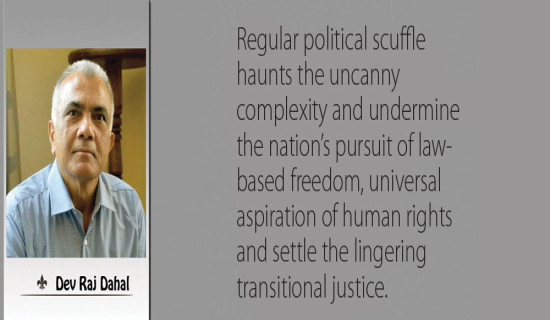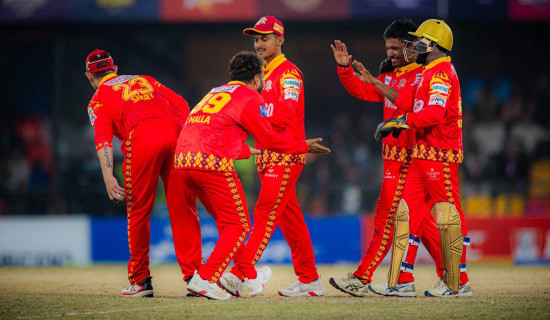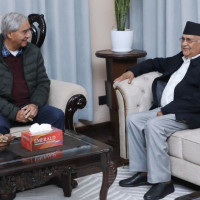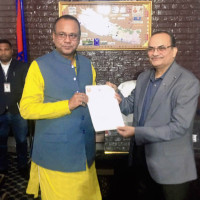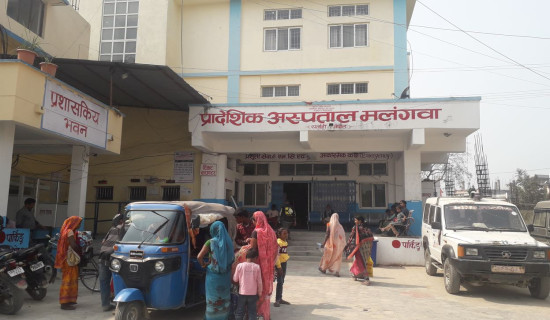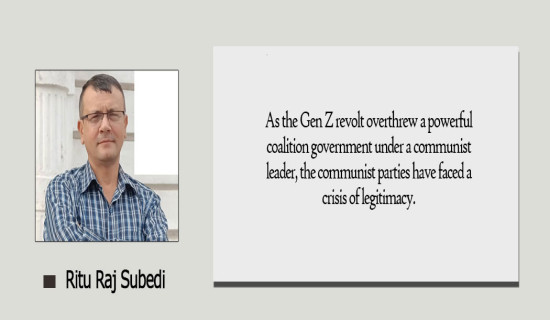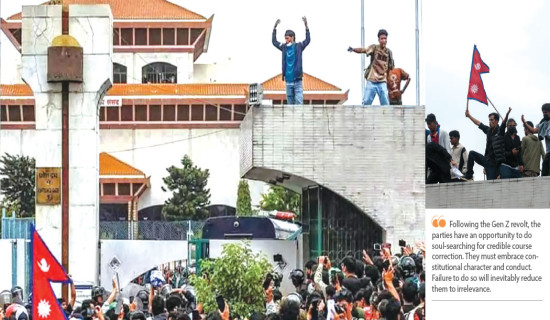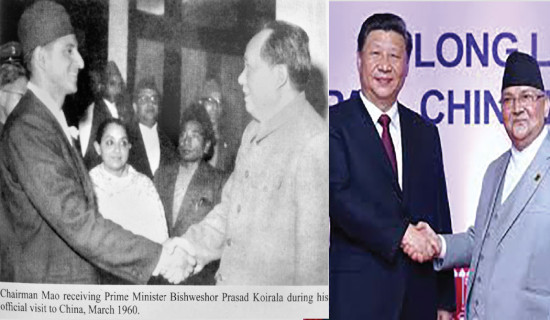- Saturday, 6 December 2025
Royalist Protests Morph Into Mayhem
Almost 17 years after its abolition, pro-monarchical forces have come to the streets with a vengeance. But their protests on Friday turned anarchist and violent at Tinkune and Koteshwor areas, forcing the government to clamp curfew in six places of the capital city. The anti-republican campaign was marked by death, arson and vandalism of private houses, public properties, and offices of political parties. Two persons, including a photo journalist, were killed in skirmishes and arsons. The unruly protest was organised to counter the rally organised by the republican parties on the same day. The pro-monarchical organisations risk losing their public support due to their bellicose showdown.
However, both agitators and the government have blamed each other for the unfortunate accidents. The government, ruling and opposition parties and mainstream media outlets have pointed the finger at the monarchical forces for the deaths and damage of properties. On the other hand, the royalists have accused the government and ruling parties of infiltrating their protests. They insist they were denied converging into a peaceful assembly by throwing tear gas onto the stage, instigating the protestors to run amok. However, a video clip shows that Durga Prasai, ‘commander’ of the royalist movement, was forcing his car through the line of security personnel, egging on his cadres to enter the prohibited areas and eventually generating tension with the cops.
Defensive
Contrary to the royalists’ violent protests, the republican parties, under the banner of Samajbadi Morcha, held their public meeting peacefully at Bhrikutimandap. The number of demonstrators in Morcha’s gathering was fivefold that of royalists, who were estimated to be over 4,000, according to the security organs. Had the royalists organised their campaign in a dignified manner, they might have won the sympathy of those frustrated with the poor delivery of the current federal republic. They missed a chance to offer their alternative roadmap and appeal to the masses. The campaign for the restoration of the monarchy and Hindu state has now gone into a defensive mode, making it offensive for the government and republican parties to deal with the former.
Nabaraj Subedi, coordinator of the 'Joint People’s Movement for the Reinstatement of Monarchy, ' has been placed under house arrest. There are reports that former king Gyanendra Shah will be arrested or detained inside his own house. Police have rounded up Rabindra Mishra, Dhabal Shumsher Rana and Swagat Nepal for their involvement in the deadly protest. Police have launched a manhunt to nab Prasai. But the royalists have not owned up to the outcomes of Friday’s mayhem. And Subedi has warned of spontaneous protests from across the country if Gyanendra Shah is locked up.
It is believed that security lapses and anarchism have been attributed to the loss of lives and properties. If the state agencies had intervened and reached the sites that were set ablaze in time, the life of cameraperson Suresh Rajak could have been saved. A CCTV footage shows two persons – one woman and one man in mask – going down from a building where late Rajak was reporting the event from a room. These two persons, who were supposed to be protesters, were accused of having set Rajak’s room on fire. On the other hand, some protesters and witnesses claimed that police in plain clothes hurled stones and tear gas from a building at the royal activists to disrupt their programme. Now, a fair investigation is warranted to catch the culprit involved in the arson.
Some analysts insist Prasai himself played a spoilsport to mess up his campaign after he saw there was not enough number of protestors on the ground. His attempt to drive his car into the defence line not only made him a provocateur but also exposed his incompetence to lead an agitation for toppling the existing system. Known for his uncouth speeches, he often demonstrates an apolitical character, though his sarcastic and coarse words easily pass to the targeted audience. In the royalist camp, there are many faces with a better public image compared to Prasai, who is criticised for his mercurial nature. He first joined Maoist decade-long insurgency and then the CPN-UML before becoming a staunch supporter of monarchy, which was dumped by the elected Constituent Assembly in 2008. Some mainstream media often depict him as a ‘medical mafia,’ which is not fair either.
Discord
Former king Gyanendra has also been dragged into controversy. One day before staging their protest rallies, Prasai had met the former king, creating an atmosphere for other forces like Rastriya Prajatantra Party (RPP) to throw support behind Prasai's campaign. RPP-Nepal of Kamal Thapa had already decided to back every movement aimed at restoring monarchy. It is believed Prasai hijacked the agenda of RPP and RPP-Nepal after he became a confidant of the former king. RPP chair Rajendra Lingden was not happy when Subedi was picked as the coordinator of the 'third janandolan'. Former chairman of the then Rastriya Panchayat, Subedi, 86, is supposed to be a consensus figure among the former Panchas and royalists, but Lingden and former minister Keshar Bahadur Bista refused to be a part of his committee.
Unlike the political parties, the royalists lack the experiences, strategy, and grassroots support to pull up federal democratic republic well institutionalised by the new constitution. Dismantling a political system instituted by a revolution is not like a walk in the park. For the political parties, it took three decades to end the party-less Panchayat system. A successful political upheaval needs the strong participation of an overwhelming number of masses involving diverse segments of society. A revolt that is guided by credible leadership and backed by objective and subjective conditions topples the regime. An agitation led by an unstable person takes it nowhere.
(The author is Deputy Executive Editor of this daily.)



